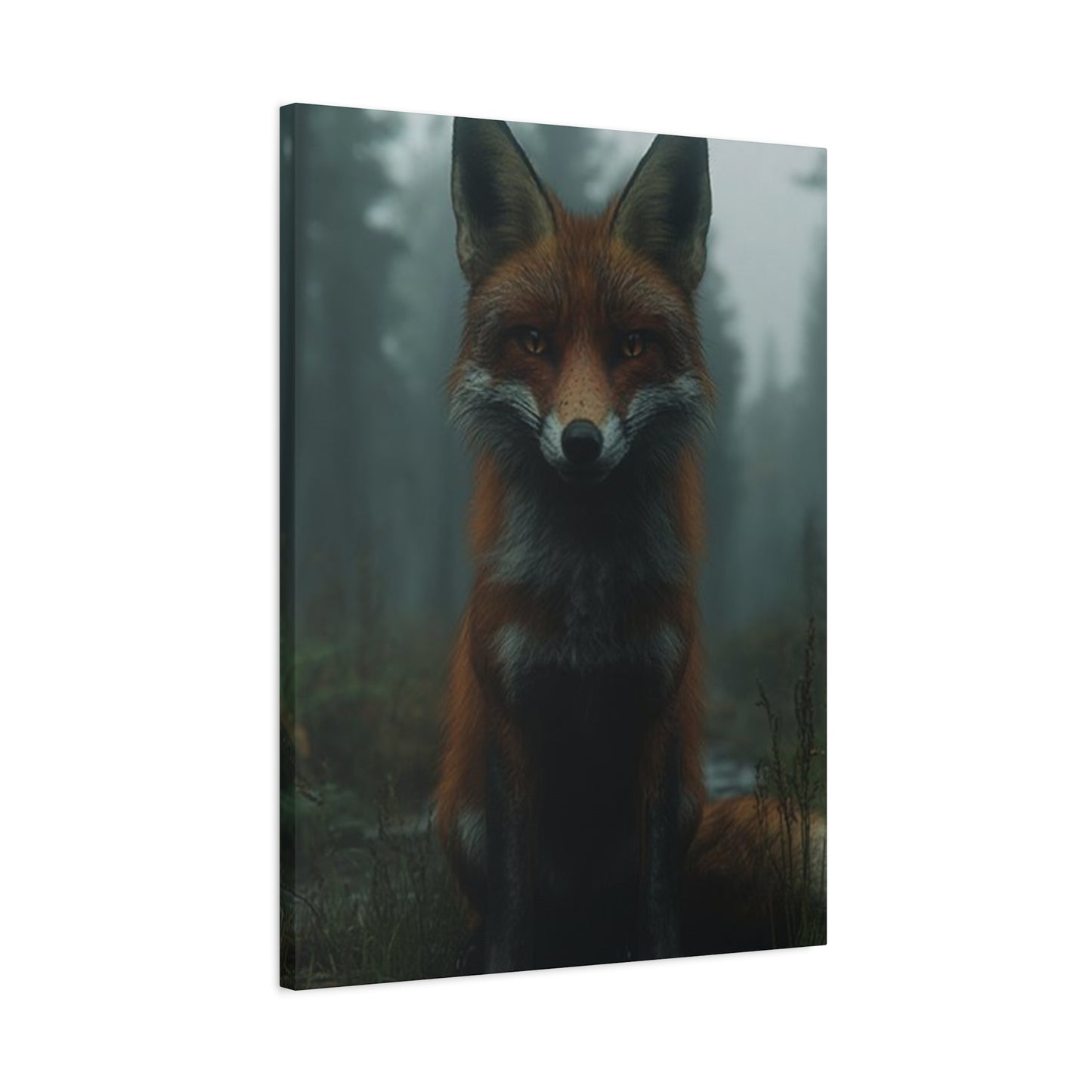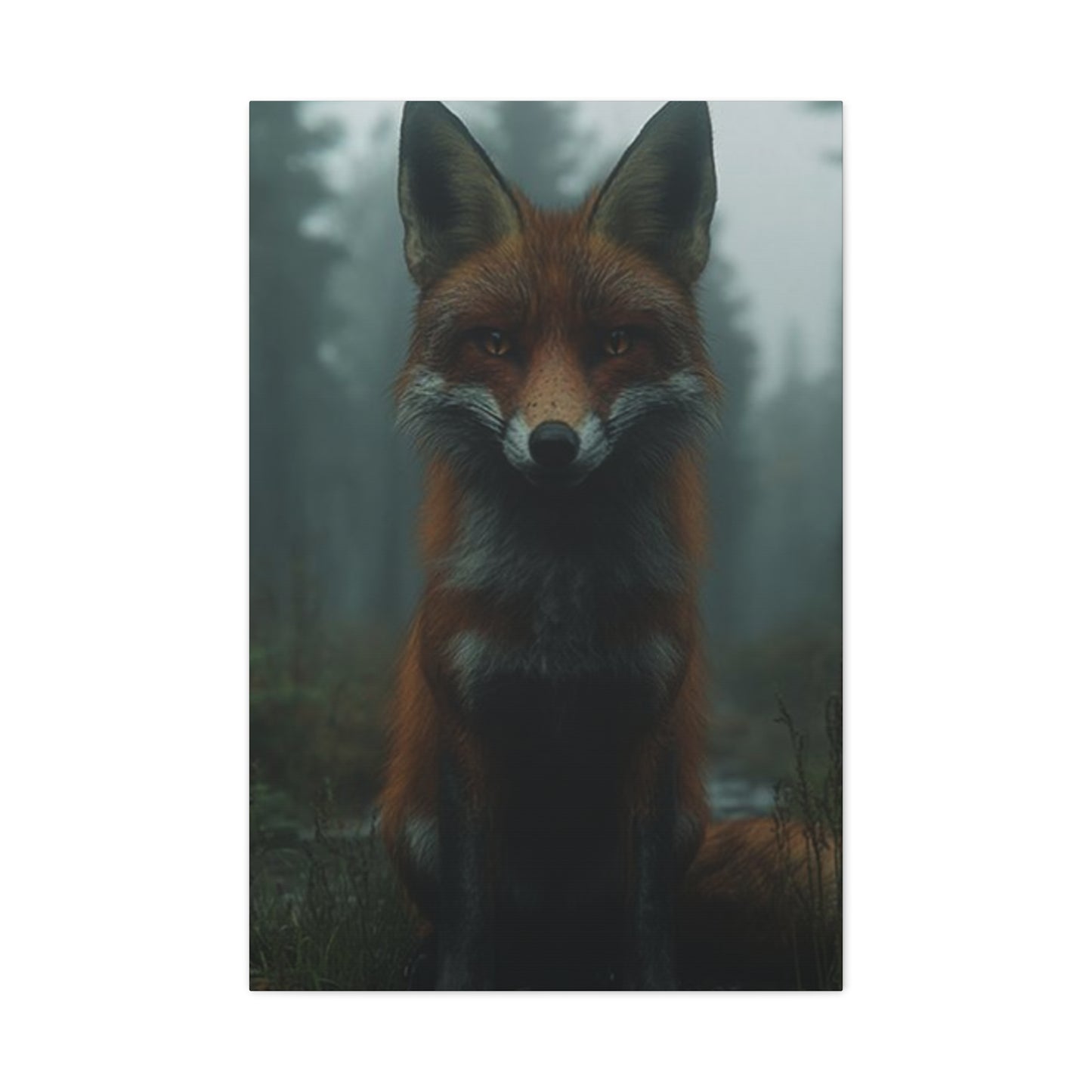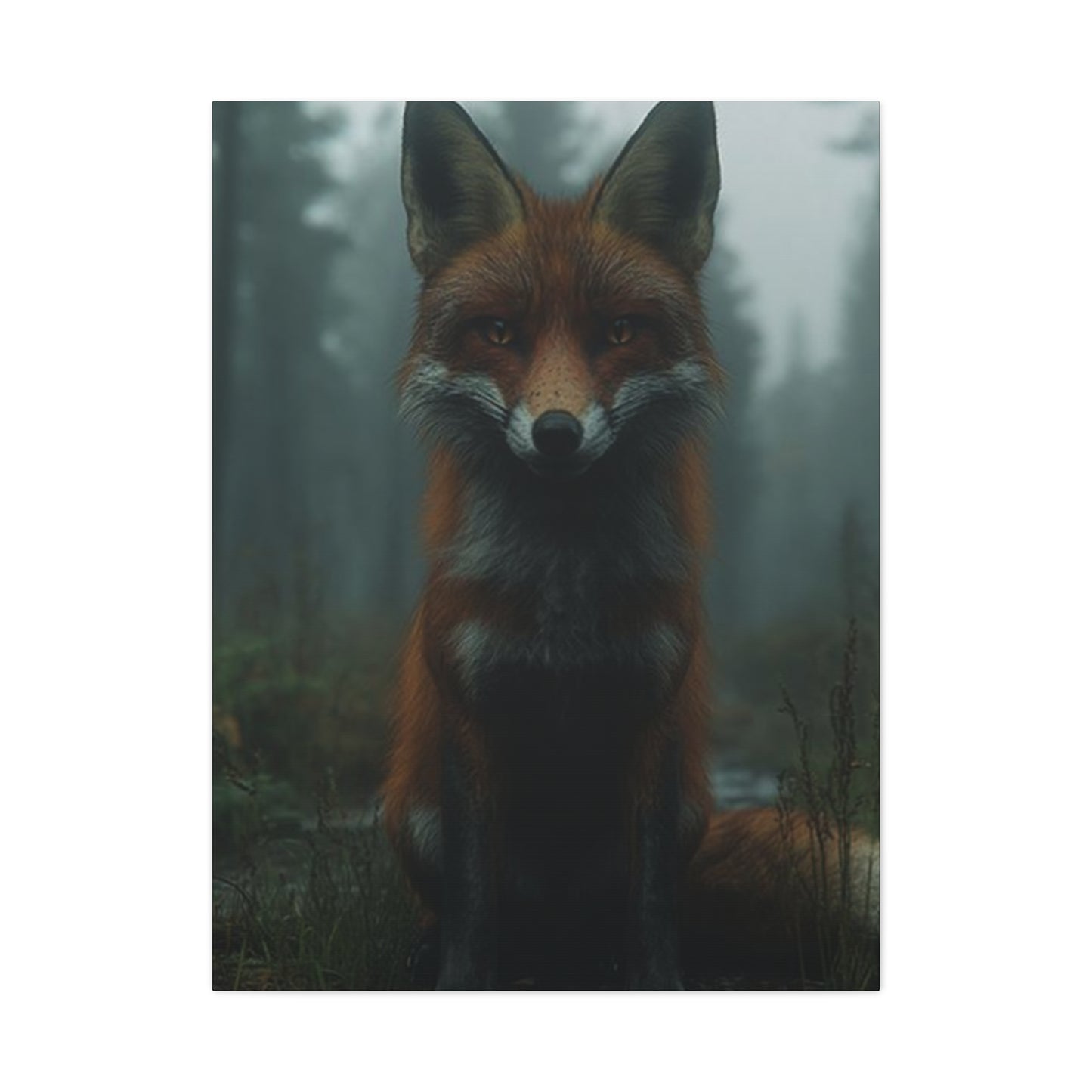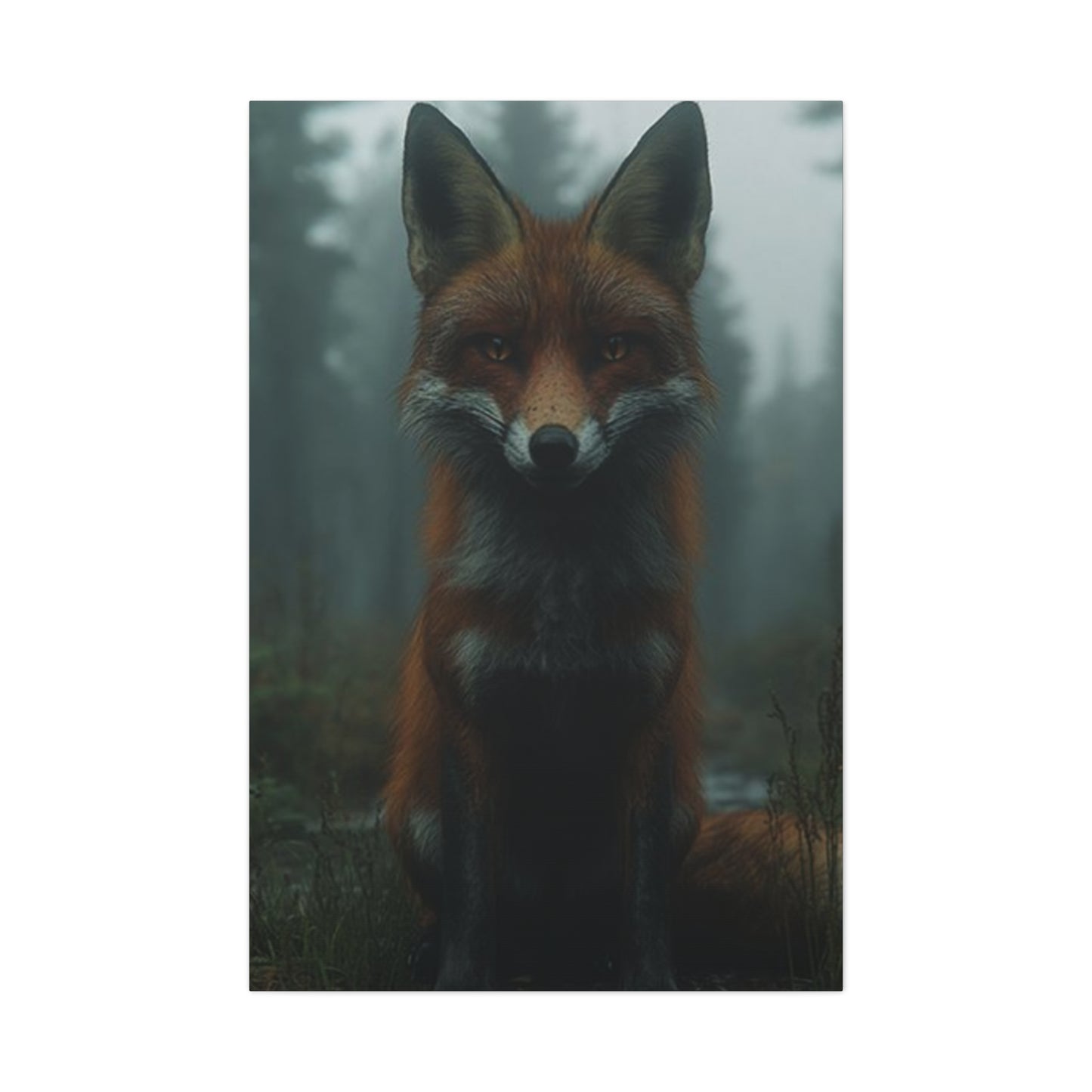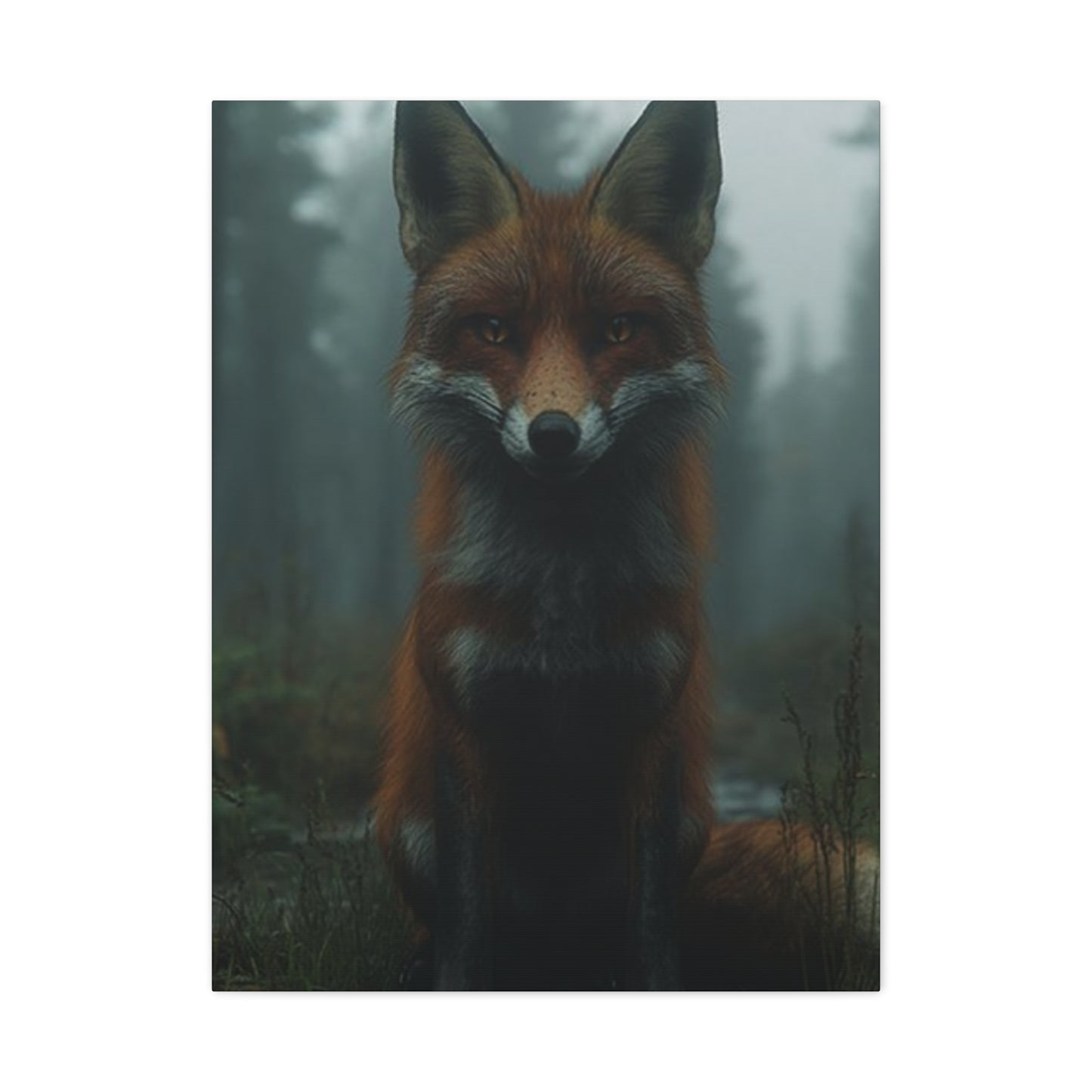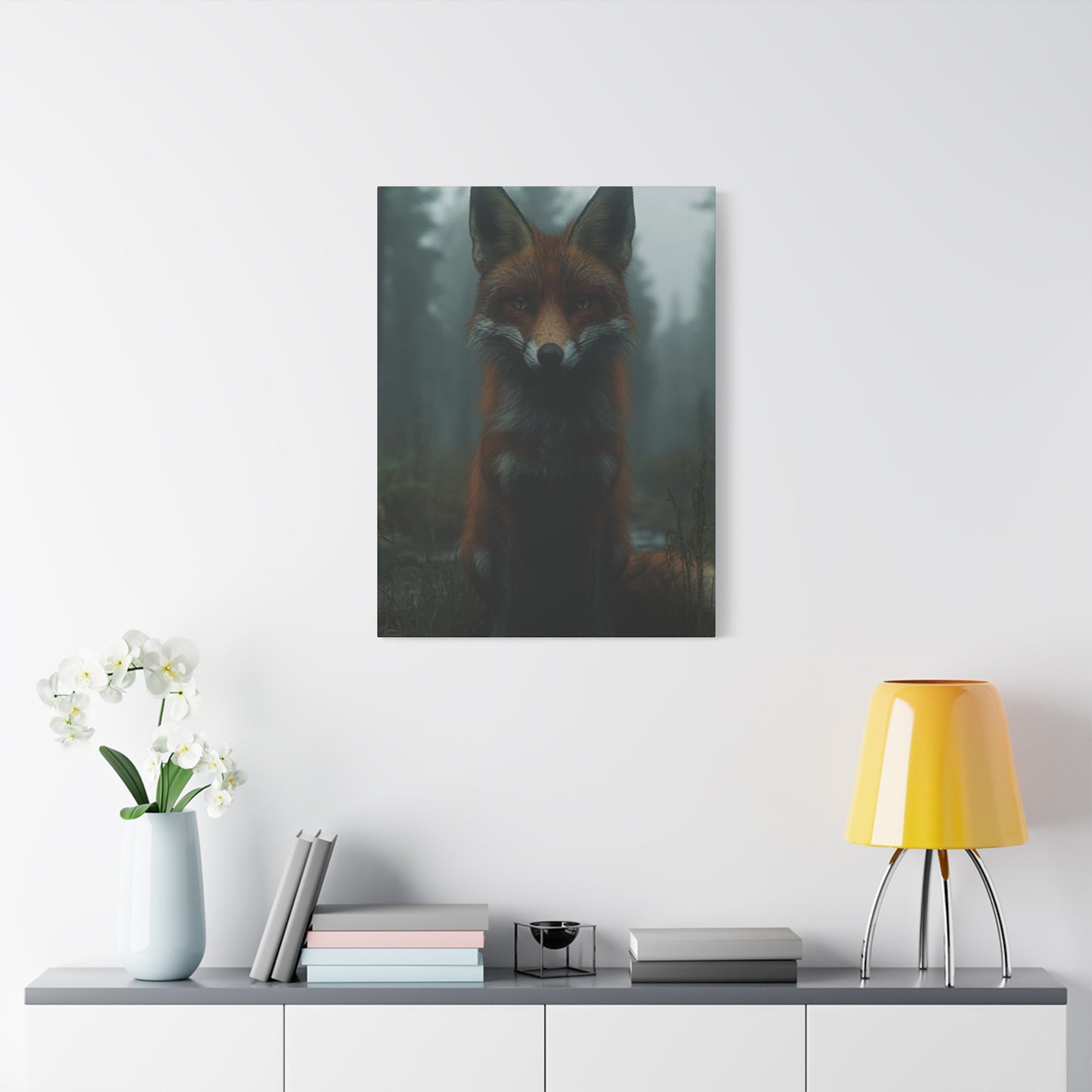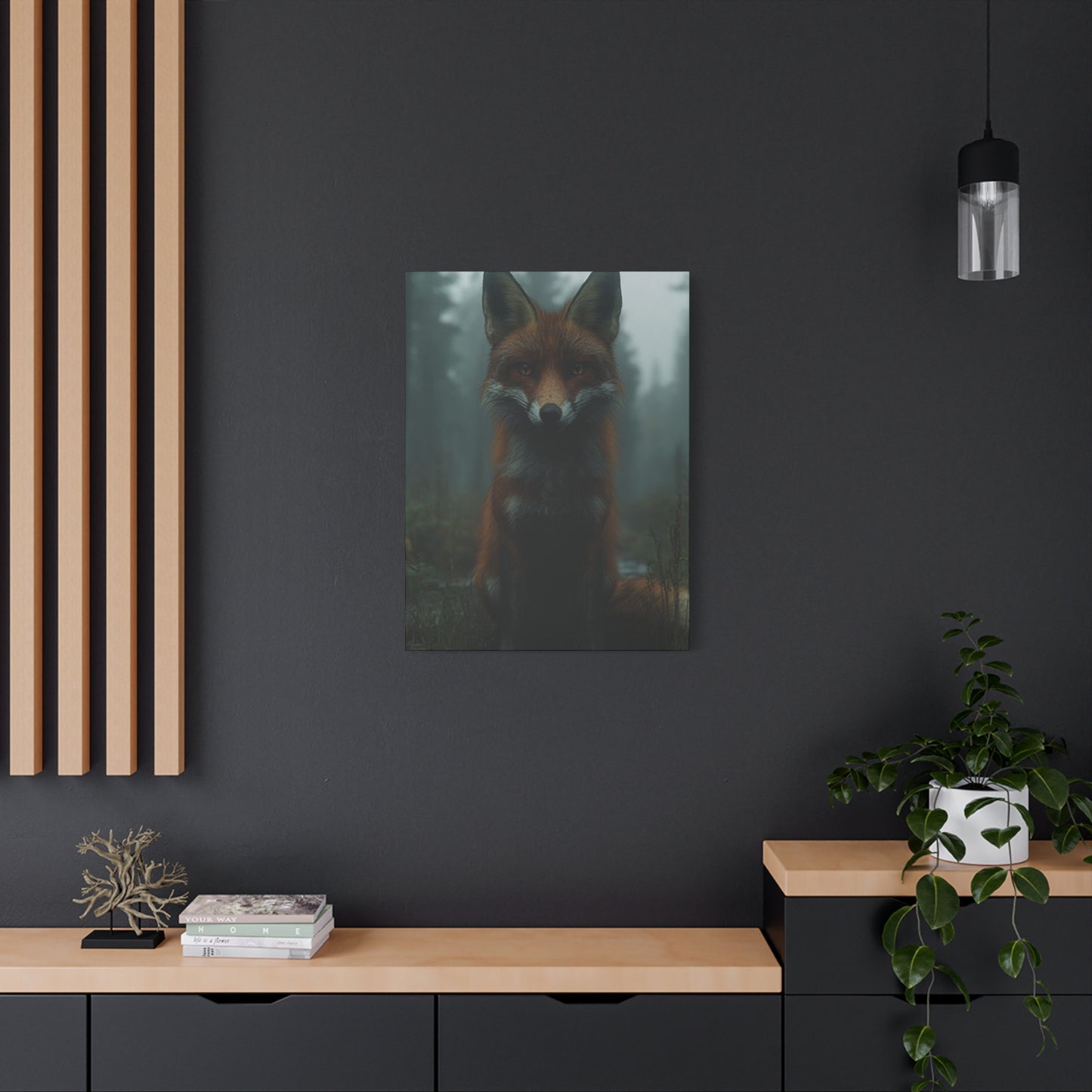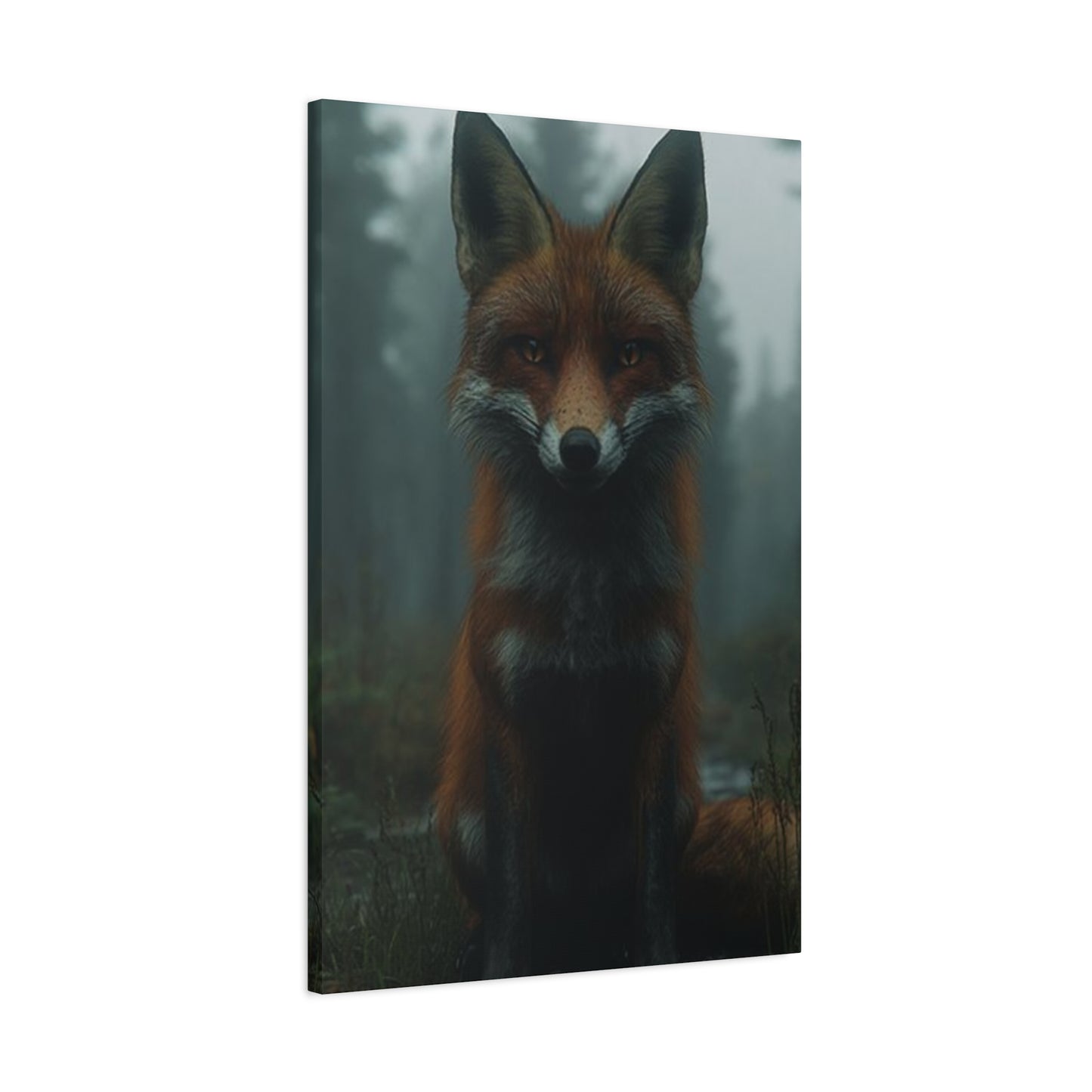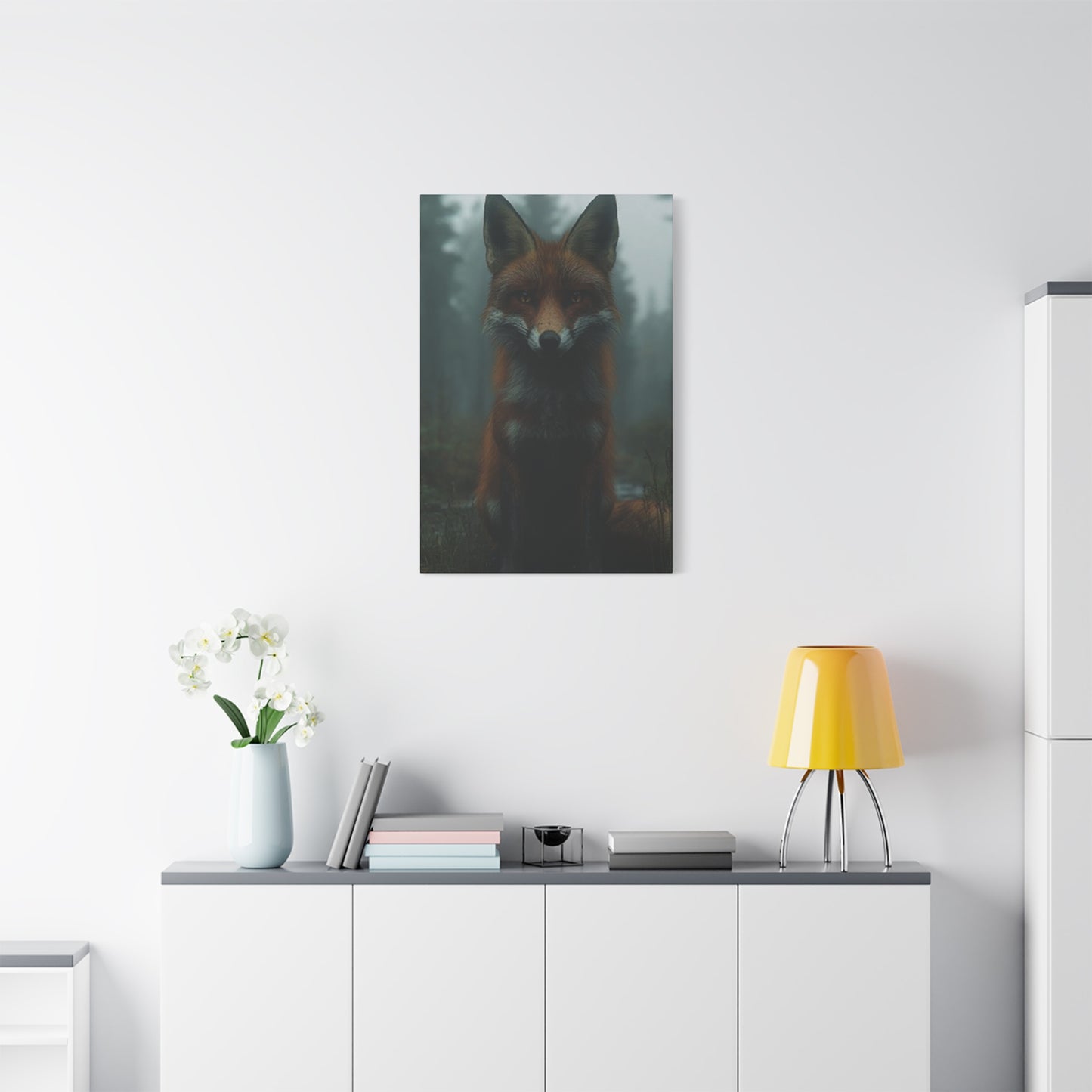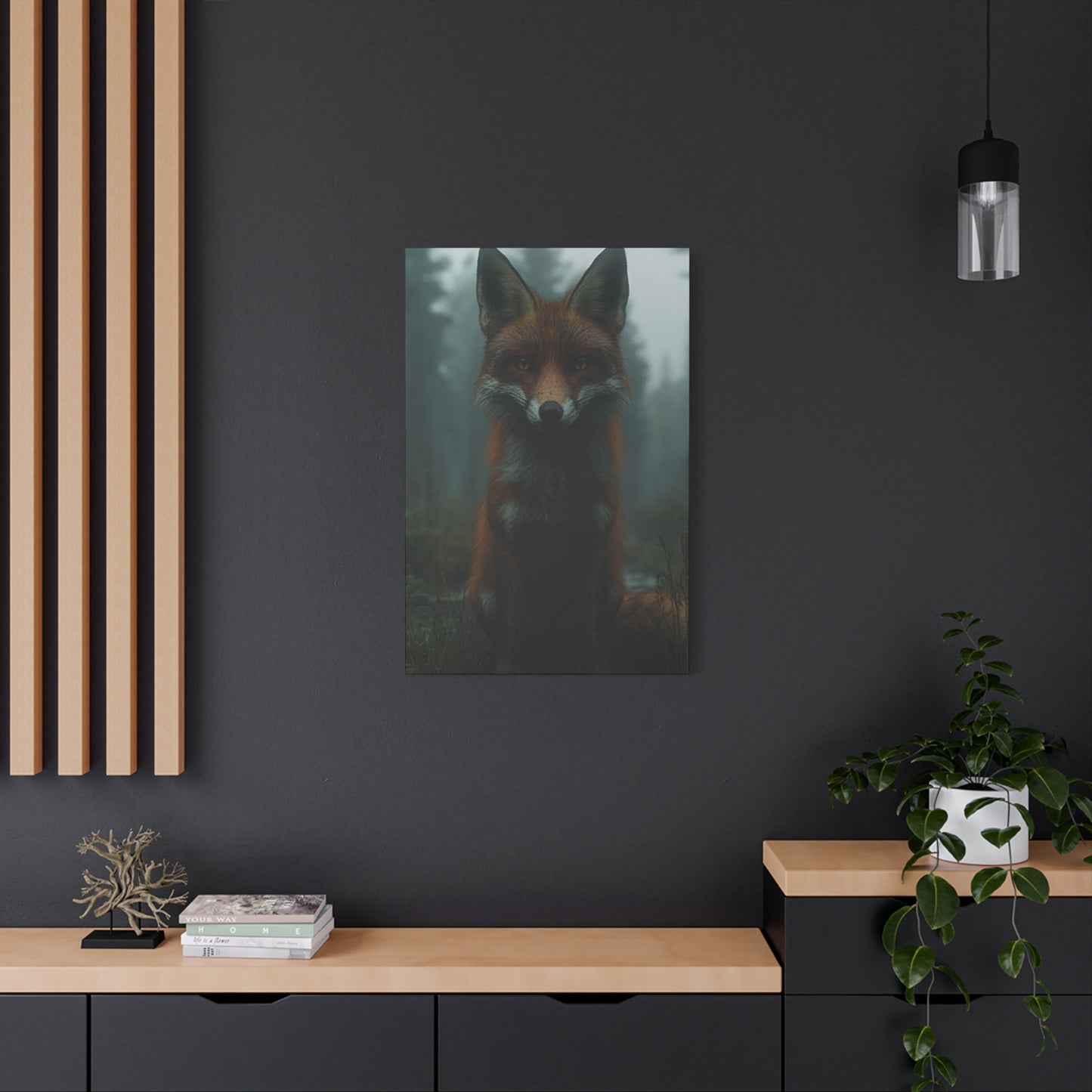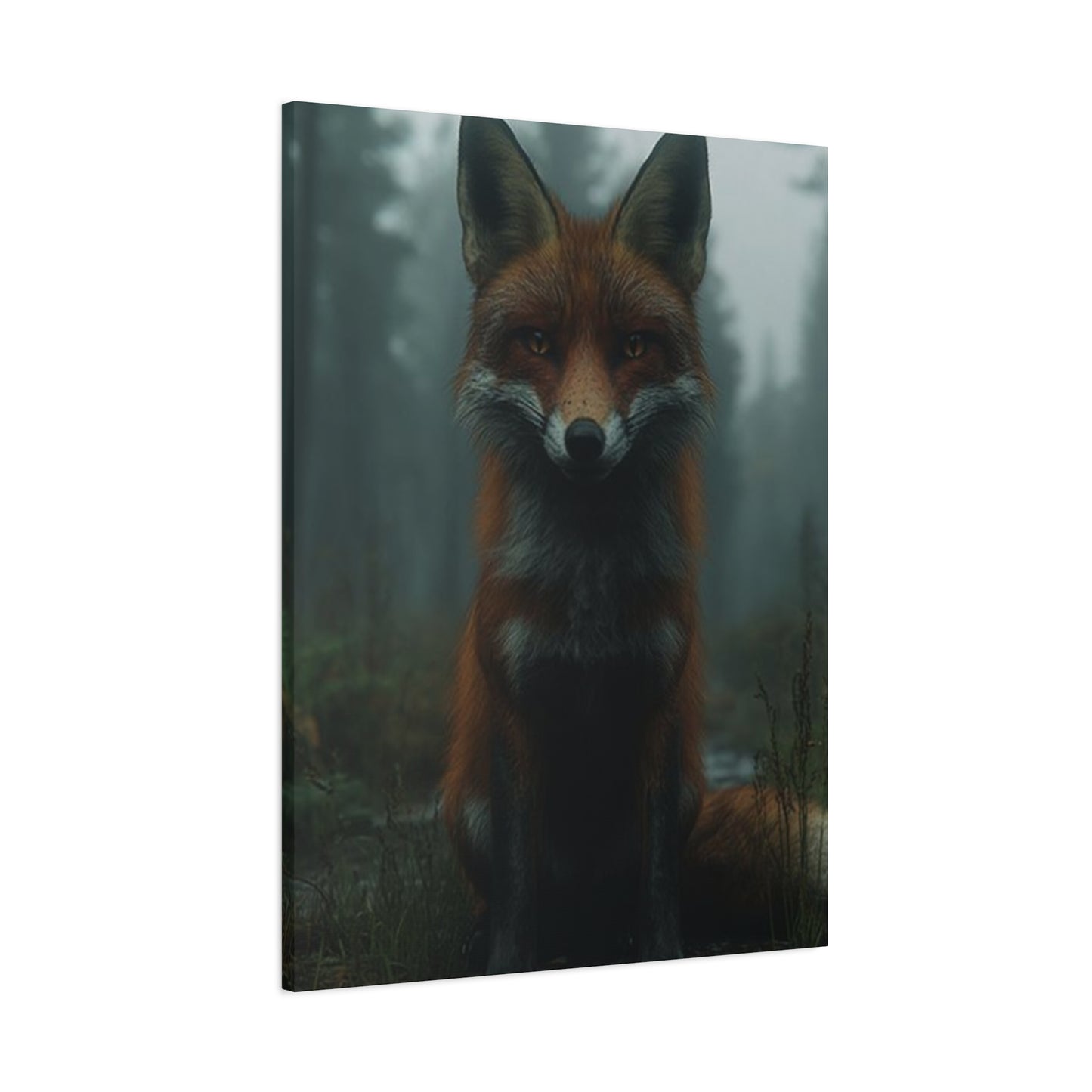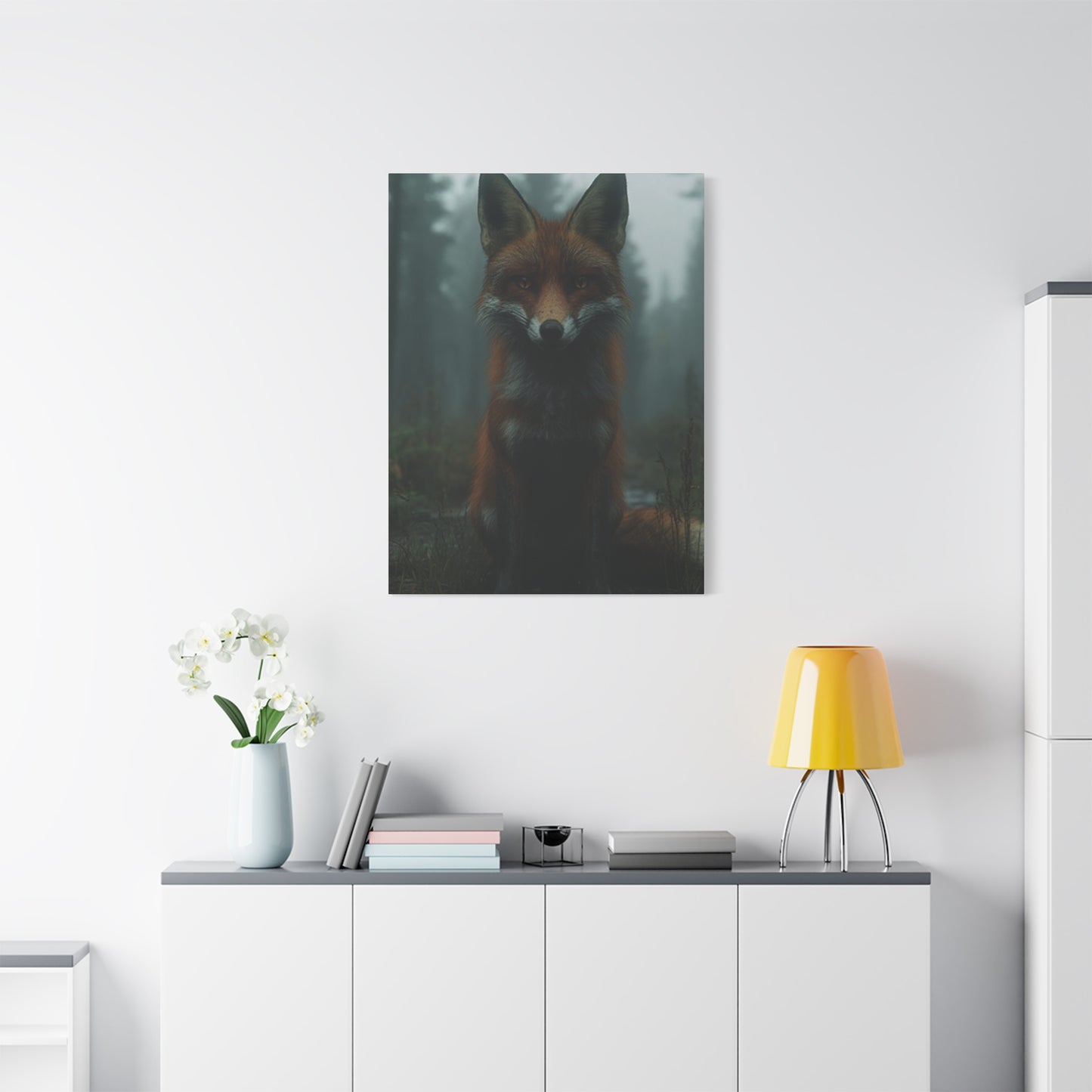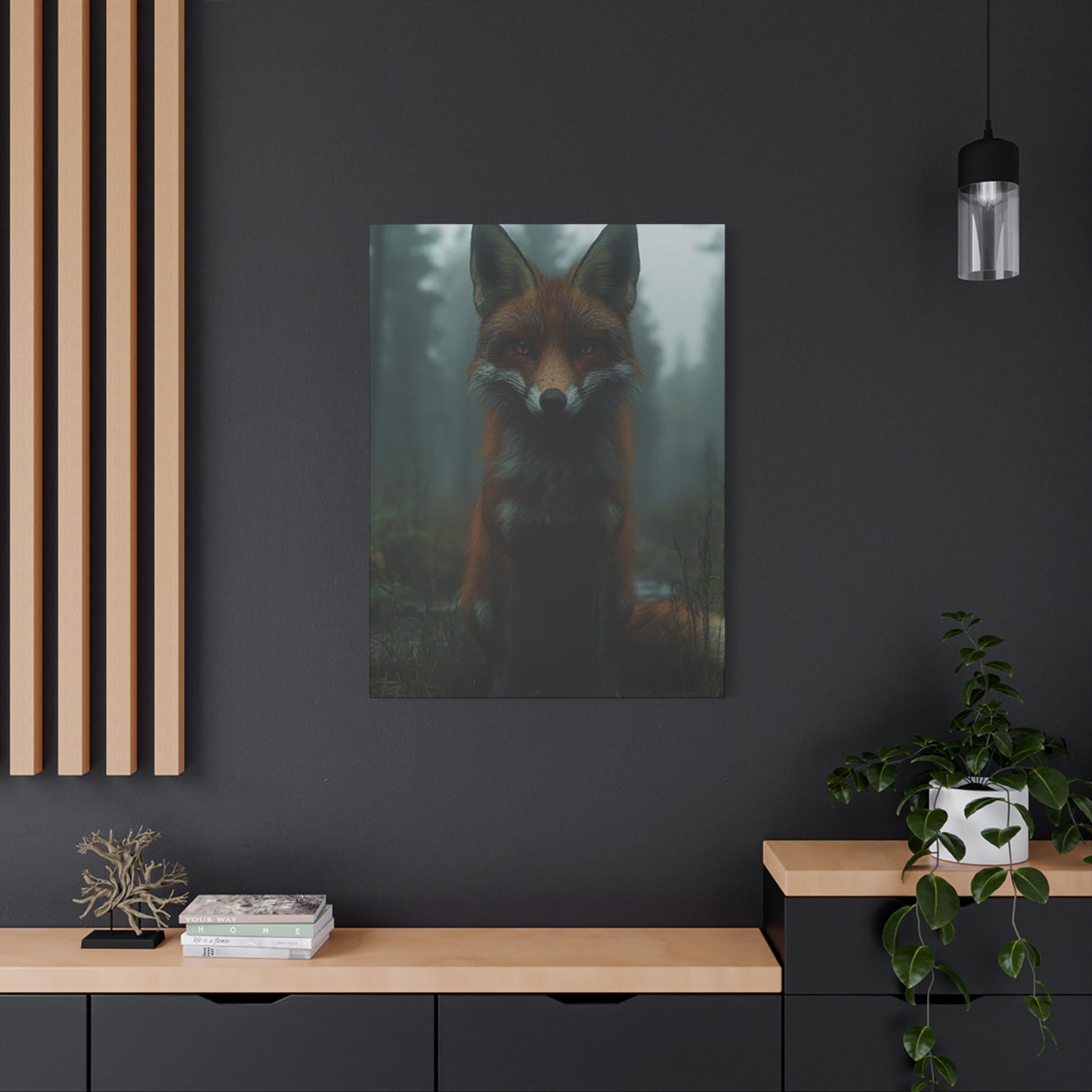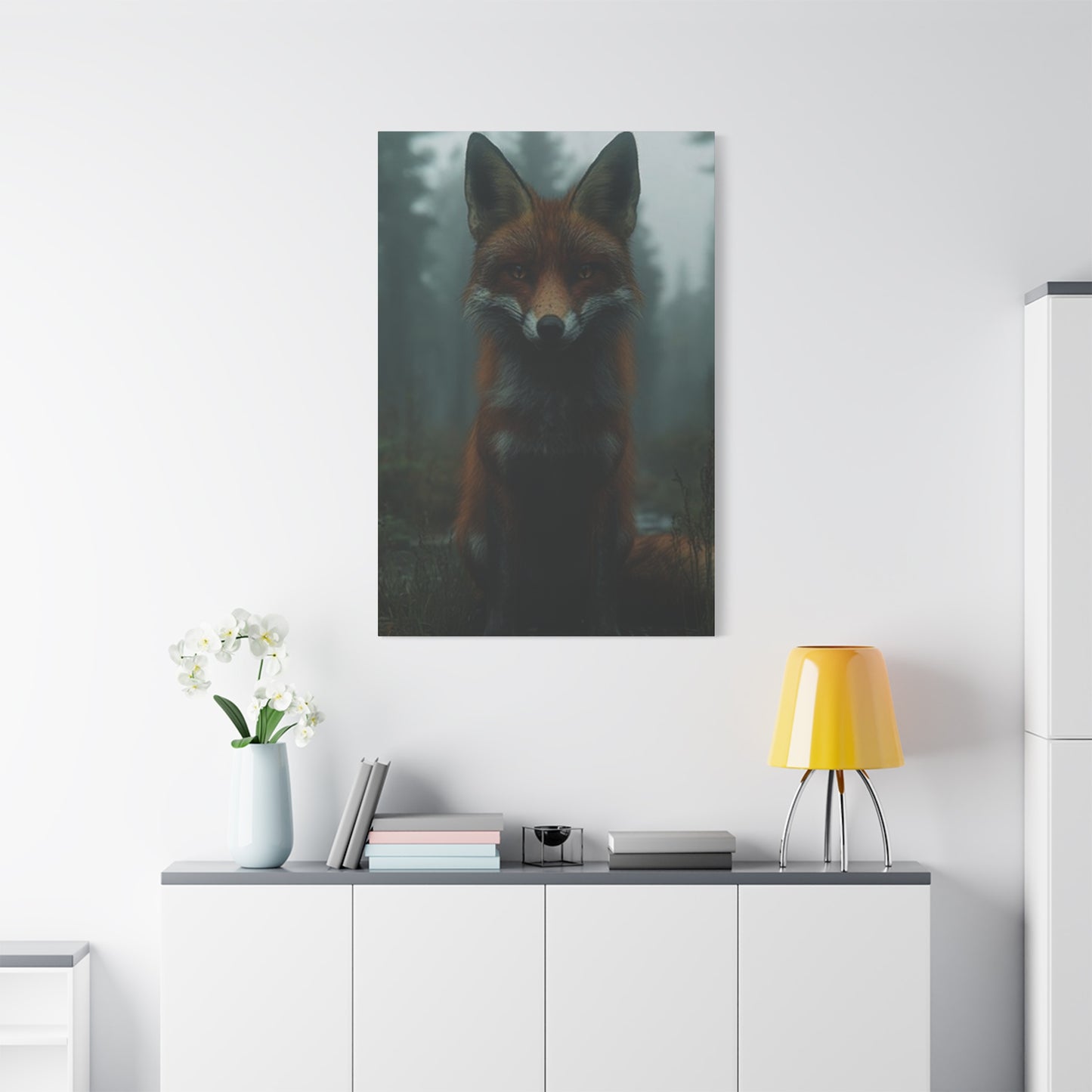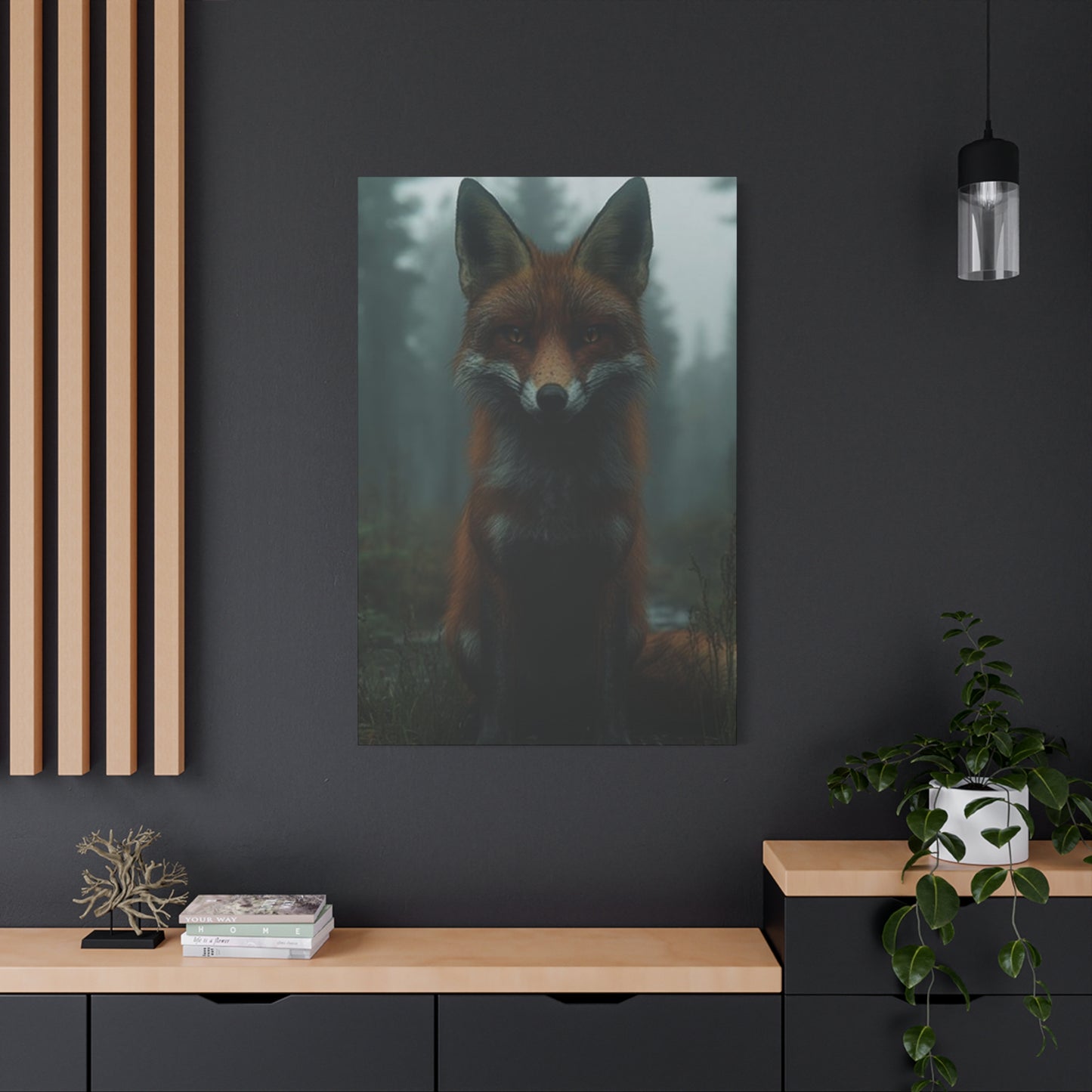Embrace Nature’s Elegance with Fox Forest Wall Art
Forest-dwelling creatures have long captured our imagination, and few animals embody the mystique of woodland environments quite like the fox. When transformed into captivating visual displays, these cunning creatures become powerful focal points that command attention and spark conversation. The appeal of fox-themed artwork extends far beyond simple animal appreciation, representing intelligence, adaptability, and the untamed beauty of natural habitats.
Creating a statement piece requires careful consideration of both artistic merit and placement strategy. Fox imagery works exceptionally well as a centerpiece because of its inherent drama and emotional resonance. The animal's distinctive features - pointed ears, bright eyes, and luxurious fur - translate beautifully onto canvas, providing rich textures and compelling visual interest that draws viewers closer.
The psychological impact of wildlife imagery cannot be understated. Research suggests that natural scenes and animal subjects can reduce stress levels and promote feelings of calm and connection to the outdoors. Fox portrayals specifically tap into our fascination with clever, resourceful creatures that thrive in challenging environments, making them particularly appealing to modern audiences seeking inspiration and resilience.
When selecting fox artwork as a statement piece, consider the emotional tone you wish to establish. A majestic fox portrait can convey confidence and wisdom, while a playful scene might suggest curiosity and adventure. The artistic style also plays a crucial role - realistic depictions offer timeless appeal, while stylized interpretations can complement contemporary aesthetics.
Size considerations are paramount when creating statement pieces. Larger formats naturally command more attention and can serve as the primary visual anchor for an entire room. However, the scale should be proportionate to the surrounding environment. A massive canvas in a small room can feel overwhelming, while a tiny piece in a vast area might get lost entirely.
The positioning of your fox artwork determines its effectiveness as a statement piece. Eye-level placement ensures optimal viewing, while strategic lighting can enhance the drama and visual impact. Consider the viewing angles from different positions within the room, ensuring the artwork remains engaging from multiple perspectives.
Bringing Wilderness Elements into Modern Living Areas
The desire to connect with nature has never been stronger, particularly as urban living distances us from wild environments. Fox-themed artwork serves as a bridge between our domesticated lives and the untamed world beyond our walls. This connection goes beyond mere decoration, fulfilling a deep-seated human need for natural beauty and wildlife encounter.
The psychological benefits of incorporating natural elements into living areas are well-documented. Biophilic design principles recognize our innate affinity for nature and its positive effects on mental health and well-being. Wildlife imagery, particularly featuring charismatic species like foxes, can trigger these beneficial responses even in urban environments completely removed from natural habitats.
Fox artwork brings specific qualities associated with woodland environments - tranquility, mystery, and organic beauty. The rich earth tones typically found in fox and forest scenes complement warm, inviting atmospheres while providing visual relief from the hard lines and artificial materials common in modern construction. This natural softness helps balance contemporary architectural elements.
The versatility of fox imagery makes it suitable for various design approaches. Whether your aesthetic leans toward rustic charm, modern sophistication, or eclectic mixing, fox artwork can be adapted to complement existing elements. The key lies in selecting pieces that harmonize with your overall design vision while still maintaining their natural authenticity.
Seasonal considerations add another layer of appeal to fox-themed artwork. These adaptable creatures are associated with different seasonal moods - from summer abundance to winter survival. This association allows the same piece to feel fresh and relevant throughout the year, providing ongoing visual interest without requiring frequent updates.
The storytelling aspect of fox imagery adds depth to any environment. Unlike abstract art that relies purely on form and color, wildlife artwork brings narrative elements that engage viewers' imaginations. Each piece suggests stories of survival, intelligence, and natural beauty that resonate with universal human experiences and values.
Color Harmony: Matching Fox and Woodland Palettes with Your Decor
Successful integration of fox and forest artwork depends largely on understanding color relationships and how they interact within existing design schemes. The natural palette of woodland scenes offers rich opportunities for creating harmonious compositions that enhance rather than compete with surrounding elements. Fox coloration typically includes warm reds, oranges, browns, and creams, which form the foundation for thoughtful color planning.
Warm color schemes built around fox imagery create cozy, inviting atmospheres particularly suited to living areas, bedrooms, and intimate gathering areas. The reddish-brown tones of fox fur harmonize beautifully with earth-based palettes featuring terracotta, ochre, and deep browns. These combinations evoke feelings of comfort and security while maintaining sophisticated visual appeal.
Cool color applications require more careful consideration but can produce stunning results. Forest backgrounds often include blues, greens, and purples that can bridge warm fox tones with cooler room palettes. Silver birch trees, misty morning scenes, and winter woodland settings provide natural cool elements that make fox artwork compatible with blue and gray decorating schemes.
Neutral applications offer the most flexibility and timeless appeal. Fox artwork against neutral backgrounds allows the natural colors to take center stage while providing enough contrast for visual impact. Cream, beige, and soft gray environments let woodland colors shine without overwhelming the composition or competing with other decorative elements.
Accent color opportunities arise from the subtle hues often found in quality fox artwork. The green of forest foliage, the blue of distant mountains, or the purple of twilight skies can inspire accent colors throughout the room. These natural touches create cohesive design schemes that feel intentional and professionally coordinated.
Monochromatic approaches can be particularly effective with fox imagery. Sepia-toned or black-and-white interpretations focus attention on form, texture, and composition rather than color relationships. These treatments can work beautifully in minimalist settings or rooms where color comes primarily from furniture and accessories rather than artwork.
The intensity and saturation of colors within fox artwork should complement the overall energy level of the room. Vibrant, saturated pieces work well in active areas like family rooms or children's areas, while muted, subtle tones are better suited to restful areas like bedrooms or meditation rooms. Understanding these relationships ensures your fox artwork enhances rather than disrupts the intended mood.
Canvas Sizing: Selecting Appropriate Dimensions for Forest Wildlife Art
The impact of artwork depends significantly on choosing appropriate dimensions for both the piece itself and its intended location. Fox and forest scenes offer unique sizing considerations because of their natural subject matter and the emotional responses they're designed to evoke. Understanding these factors helps ensure your investment creates the desired visual and psychological impact.
Large-format presentations work exceptionally well for fox artwork because they allow viewers to appreciate fine details like fur texture, eye expression, and environmental elements. Forest scenes particularly benefit from generous sizing that lets viewers feel immersed in the natural setting. A substantial fox portrait can create the illusion of wildlife encounter, triggering the same wonder and excitement as spotting these creatures in their natural habitat.
Medium-sized pieces offer excellent versatility and are often the most practical choice for residential applications. These dimensions provide sufficient detail and impact while remaining manageable for most room configurations. Medium formats work particularly well in groupings, allowing for creative arrangements that tell visual stories or explore different aspects of fox behavior and habitat.
Small-format artwork requires careful consideration to ensure effectiveness. While intimate pieces can work beautifully in appropriate settings, fox imagery needs sufficient size to convey the animal's personality and presence. Tiny fox pieces risk losing their emotional impact and may feel insignificant rather than charming.
Proportional relationships between artwork and furniture are crucial for achieving balanced compositions. Fox artwork should complement rather than compete with major furniture pieces. A large sectional sofa might require an equally substantial artwork to maintain visual equilibrium, while a delicate writing desk calls for more modest proportions.
Room architecture influences sizing decisions significantly. High ceilings can accommodate taller formats that draw the eye upward and emphasize vertical elements. Wide walls might benefit from horizontal compositions that echo the fox's natural movement patterns and forest expanses. Understanding these architectural relationships prevents awkward proportions and enhances overall room harmony.
Multiple piece installations offer creative opportunities for fox artwork. Series of related pieces can be sized differently to create visual rhythm and movement. A large central piece flanked by smaller complementary works can create sophisticated gallery wall effects that maximize impact while providing design flexibility.
Rustic Settings: Incorporating Woodland Fox Imagery in Traditional Decor
Rustic design aesthetics and fox imagery form natural partnerships that celebrate craftsmanship, natural materials, and outdoor living. The inherent connection between foxes and wild landscapes makes them perfect subjects for cabins, country homes, and urban areas seeking to capture rural charm. Understanding how to effectively integrate these elements creates authentic, cohesive environments that honor both artistic merit and design tradition.
Traditional materials play crucial roles in rustic fox artwork presentations. Reclaimed wood frames echo the forest habitat while providing sturdy, authentic mounting solutions. The weathered textures and natural imperfections of aged wood complement the organic qualities of wildlife imagery, creating unified compositions that feel genuine rather than contrived.
Color relationships in rustic settings tend toward earth tones and natural hues that harmonize effortlessly with fox coloration. Rich browns, forest greens, and warm tans create backgrounds that let wildlife imagery shine while maintaining the cozy, grounded feeling essential to rustic appeal. These natural palettes also age gracefully, developing character over time rather than looking dated.
Texture combinations are particularly important in rustic applications. The smooth surface of canvas contrasts beautifully with rough-hewn wood, natural stone, and woven textiles commonly found in country decorating. This interplay of textures adds visual interest and tactile appeal that engages multiple senses and creates more immersive experiences.
Scale considerations in rustic settings often favor generous proportions that reflect the grand scale of natural environments. Large fox portraits can hold their own against massive stone fireplaces, exposed beam ceilings, and oversized furniture typical of country design. Bold sizing also reinforces the connection to wide-open outdoor areas where these creatures roam freely.
Lighting approaches in rustic environments should enhance the natural warmth and coziness associated with country living. Warm-toned lighting brings out the rich colors in fox fur and forest settings while creating inviting atmospheres perfect for relaxation and gathering. Avoid harsh, cool lighting that can make wildlife imagery feel cold or unwelcoming.
Placement strategies should consider the informal, comfortable nature of rustic design. Fox artwork works beautifully above stone fireplaces, in cozy reading nooks, or as focal points in great rooms designed for family gathering. These placement choices reinforce the connection to home comfort and natural beauty that defines successful rustic decorating.
Clean Lines and Fox Art: Minimalist Room Applications
The apparent contradiction between busy wildlife imagery and minimalist design principles can be resolved through careful selection and thoughtful presentation strategies. Fox artwork can enhance rather than compromise clean, uncluttered environments when approached with understanding of minimalist values and aesthetic goals. The key lies in choosing pieces that embody simplicity while maintaining their natural appeal.
Simplicity in subject matter becomes crucial for minimalist applications. Close-up fox portraits with clean backgrounds work better than complex forest scenes filled with multiple elements. Single-animal compositions maintain focus and prevent visual chaos that contradicts minimalist principles. These simpler treatments allow the fox's natural beauty to shine without overwhelming the serene atmosphere.
Color restraint helps fox imagery integrate successfully into minimalist environments. Black-and-white photography, monochromatic paintings, or pieces with severely limited color palettes can provide natural interest while maintaining the visual calm essential to minimalist success. These approaches focus attention on form, composition, and emotional content rather than chromatic complexity.
Strategic placement becomes even more critical in minimalist settings where every element receives heightened attention. A single, carefully chosen fox piece can serve as the room's primary visual interest while maintaining the uncluttered aesthetic. Proper sizing ensures the artwork provides sufficient impact without overwhelming the intentional emptiness that defines minimalist appeal.
Frame selection should emphasize clean lines and neutral colors that complement minimalist furniture and architectural elements. Simple metal frames, natural wood with minimal finishing, or even frameless mounting can work effectively depending on the specific piece and room characteristics. The goal is invisibility - letting the artwork speak without distraction from mounting choices.
Negative consideration - the empty areas around artwork - becomes particularly important in minimalist applications. Fox imagery needs sufficient breathing room to prevent feelings of crowding or visual tension. This consideration influences not only sizing decisions but also placement relationships with furniture and architectural elements.
Quality over quantity principles apply strongly to minimalist fox artwork selections. A single, exceptional piece will always serve minimalist goals better than multiple lesser works. This approach also aligns with sustainability values often associated with minimalist living, emphasizing mindful consumption and lasting value over frequent changes or accumulation.
Perfect Presents: Wildlife Art for Nature Enthusiasts
Gift-giving opportunities abound with fox and forest artwork, particularly for recipients who value natural beauty, wildlife conservation, or outdoor activities. Understanding what makes wildlife art meaningful as a gift helps ensure your selection creates lasting joy and appreciation rather than mere politeness. The emotional connections people form with animal imagery make these pieces particularly powerful gift choices.
Personal connection considerations are paramount when selecting fox artwork as gifts. Consider the recipient's relationship with nature - are they active outdoor enthusiasts, wildlife photographers, or simply people who find peace in natural beauty? Understanding these connections helps guide choices toward pieces that will resonate personally rather than serving as generic decoration.
Artistic quality becomes especially important in gift selections since recipients may not have chosen the piece themselves. Higher-quality artwork tends to grow in appreciation over time, while lesser pieces may feel burdensome or inappropriate. Investing in well-executed pieces shows respect for the recipient's taste and provides lasting value that justifies the thoughtfulness of the gift.
Size considerations require careful thought when artwork is intended as a gift. Without knowing specific placement plans, medium sizes tend to work best as they provide flexibility for various room applications. Extremely large pieces might overwhelm smaller living areas, while tiny pieces can feel insignificant for such a meaningful gift category.
Presentation quality adds significantly to the gift experience. Professional framing, elegant packaging, and thoughtful delivery timing all contribute to the recipient's initial impression and long-term appreciation. Fox artwork presented beautifully communicates care and consideration that extends beyond the piece itself.
Symbolic meaning often plays important roles in wildlife gift selections. Foxes represent intelligence, adaptability, and connection to wild places - qualities many people aspire to embody. Choosing artwork that reflects positive characteristics the recipient possesses or admires adds layers of meaning that make the gift more personal and significant.
Practical considerations shouldn't be overlooked in gift planning. Consider the recipient's lifestyle, living situation, and existing decor when selecting fox artwork. A piece that fits beautifully into their current environment will be appreciated and displayed, while something that clashes or doesn't suit their circumstances might end up stored away, defeating the gift's purpose.
Temperature Balance: Harmonizing Warm and Cool Elements in Woodland Scenes
Successful integration of fox and forest artwork often requires balancing the inherently warm tones of fox coloration with the cooler elements typically found in woodland environments. This temperature balance affects both the artwork selection process and its interaction with existing room elements. Understanding color temperature relationships helps create harmonious compositions that feel natural and pleasing.
Warm dominance occurs naturally in fox-focused artwork where the animal's reddish-brown fur provides the primary color interest. These pieces work beautifully in rooms with warm color schemes but require careful handling in cooler environments. The challenge lies in bridging temperature differences without compromising the natural warmth that makes fox imagery appealing.
Cool integration opportunities exist within most forest scenes through background elements like distant mountains, water features, or atmospheric effects. These natural cool elements can help fox artwork work successfully in rooms dominated by blues, greens, or grays. Selecting pieces that include these temperature bridges prevents jarring contrasts that might make the artwork feel out of place.
Neutral mediators play important roles in temperature balancing. Gray rocks, white birch bark, or brown earth tones can serve as neutral bridges between warm and cool elements. These natural neutrals help create smooth transitions that make complex color relationships feel organic rather than forced or artificial.
Lighting influence on color temperature cannot be ignored when planning fox artwork integration. Warm artificial lighting can enhance the natural warmth of fox imagery while making cool room elements feel more welcoming. Conversely, cool lighting can emphasize forest backgrounds while potentially washing out the warm tones that make fox subjects appealing.
Seasonal associations offer natural temperature variation opportunities. Summer fox scenes might emphasize warmer greens and golden light, while winter compositions could feature cooler blues and grays that provide natural temperature balance. Understanding these seasonal relationships helps in selecting pieces that work well within existing color schemes.
Complementary strategies can be employed to achieve temperature balance through surrounding elements rather than artwork modifications. Cool accent pillows, warm wooden furniture, or neutral wall colors can help bridge temperature differences and create cohesive environments that honor both the artwork's natural characteristics and the room's existing aesthetic.
Illumination Effects: How Lighting Transforms Forest Wildlife Displays
The interaction between lighting and fox artwork can dramatically influence both the piece's visual impact and its integration within room environments. Understanding these lighting relationships helps optimize artwork presentation while creating atmospheric effects that enhance the natural beauty of wildlife subjects. Proper illumination can transform good artwork into spectacular focal points.
Natural lighting considerations begin with understanding how daylight changes throughout the day and seasons. Morning light tends toward cooler temperatures that might emphasize forest backgrounds, while evening light grows warmer and can enhance fox coloration. South-facing locations receive more consistent light but may require protection from direct sun exposure that could fade artwork over time.
Artificial lighting options provide more control over artwork presentation and can be customized to optimize specific pieces. Picture lights mounted directly on frames provide focused illumination that highlights details and creates dramatic contrast with surrounding areas. Track lighting offers flexibility for adjusting both intensity and angle to achieve desired effects.
Color temperature selection in artificial lighting significantly influences how fox artwork appears and integrates with room environments. Warm lighting (2700K-3000K) enhances natural fox coloration and creates cozy, inviting atmospheres. Cool lighting (4000K+) might emphasize forest backgrounds but could wash out warm fur tones that make fox subjects appealing.
Angle considerations affect both the artwork's visibility and the mood it creates. Direct lighting from above can create harsh shadows and glare, while angled lighting from the sides provides more even illumination with better detail visibility. Uplighting can create dramatic silhouette effects but might not provide sufficient detail illumination for complex artwork.
Intensity control allows for mood adjustment throughout different times and uses. Bright illumination works well for active viewing and detail appreciation, while dimmer settings create atmospheric effects perfect for relaxation or entertaining. Dimmer switches or layered lighting systems provide this flexibility without requiring multiple fixtures.
Integration with room lighting schemes ensures fox artwork becomes part of a cohesive lighting plan rather than an isolated element. The artwork lighting should complement rather than compete with general room illumination, creating balanced environments that feel intentional and professionally designed.
Symbolic Meanings: Understanding Fox Representations in Art and Culture
The cultural significance of fox imagery extends far beyond simple animal portraiture, drawing from rich traditions of folklore, mythology, and symbolic representation that add depth and meaning to artistic displays. Understanding these symbolic layers helps viewers appreciate fox artwork on multiple levels while informing selection decisions for specific environments and purposes.
Intelligence symbolism represents one of the most universal fox associations across cultures. These clever creatures are renowned for problem-solving abilities, adaptability, and strategic thinking that have earned them respect and admiration throughout human history. Fox artwork can therefore represent wisdom, cunning, and intellectual prowess - qualities particularly appropriate for study areas, offices, or learning environments.
Adaptability themes resonate strongly in contemporary life where change and flexibility are essential survival skills. Foxes thrive in diverse environments from arctic tundra to urban parks, making them powerful symbols of resilience and adaptation. This symbolism can provide inspiration and encouragement in challenging times while celebrating the ability to thrive despite difficulties.
Trickster traditions appear in many cultures where foxes represent cleverness that sometimes borders on mischief. These playful associations can add whimsy and humor to artwork selections while acknowledging the complex nature of intelligence and cunning. Trickster symbolism works particularly well in casual areas or children's rooms where playfulness is welcome.
Spiritual connections vary across cultures but often involve foxes as messengers between worlds or guides for spiritual journeys. Japanese kitsune, Native American fox spirits, and European folklore all attribute supernatural qualities to these creatures. Such spiritual associations can add meaningful depth to fox artwork in meditation areas or personal retreat areas.
Seasonal symbolism connects foxes with autumn abundance, winter survival, and spring renewal cycles that reflect natural rhythms and life transitions. These associations make fox artwork particularly meaningful during specific seasons or life changes, providing comfort and connection to natural cycles that ground us in larger patterns.
Cultural specificity should be considered when selecting fox artwork with symbolic content. Different artistic traditions and cultural perspectives bring varying interpretations and meanings that might influence how pieces are perceived and appreciated. Understanding these cultural contexts helps ensure appropriate selections for specific audiences and purposes.
Frame Selection: Choosing Borders That Enhance Woodland Wildlife Art
The frame selection process significantly influences how fox artwork integrates with room environments and achieves its intended visual impact. Beyond simple protection and mounting functions, frames serve as transition elements between artwork and surroundings while contributing their own aesthetic qualities to the overall composition. Understanding framing principles helps optimize fox artwork presentation.
Material selection should complement both the artwork's natural subject matter and the room's existing elements. Wood frames echo forest habitats while providing warm, organic textures that harmonize with fox imagery. Metal frames offer contemporary appeal and durability but should be chosen carefully to avoid coldness that might conflict with wildlife warmth.
Color relationships between frames and artwork require careful consideration to achieve desired effects. Neutral frames allow artwork to take center stage while providing necessary definition and protection. Colored frames can either complement artwork tones for harmonious effects or provide contrast for more dramatic presentations.
Profile considerations influence both visual weight and style compatibility. Thin profiles maintain focus on artwork while providing minimal distraction from natural subjects. Wider profiles can add importance and presence but might overwhelm delicate pieces or conflict with minimalist room aesthetics.
Finish quality affects both appearance and longevity while contributing to overall presentation sophistication. High-quality finishes resist wear and maintain appearance over time, justifying higher initial costs through lasting value. Poor finishes can detract from even excellent artwork and may require early replacement.
Style compatibility ensures frames support rather than compete with artwork and room aesthetics. Traditional frames work well with realistic wildlife artwork and classic room designs. Contemporary frames suit stylized interpretations and modern environments. Mixed styles can work but require careful coordination to avoid visual confusion.
Custom versus standard sizing options affect both cost and optimal presentation. Standard sizes offer cost advantages and wide selection but might not perfectly suit specific pieces or placement requirements. Custom framing provides exact sizing and premium materials but requires larger investments and longer lead times.
Strategic Positioning: Maximizing Visual Impact Through Placement
The positioning of fox artwork determines much of its success in creating desired visual and emotional effects within room environments. Strategic placement considerations go beyond simple wall mounting to include relationships with furniture, lighting, traffic patterns, and viewing angles that collectively determine how effectively the artwork achieves its intended purposes.
Eye-level positioning provides optimal viewing for most applications, but the specific height should consider the primary viewing positions and user demographics. Standard eye level assumes standing adults, but seated viewing positions might require lower placement for comfortable appreciation. Family rooms where people primarily sit should consider these different perspectives.
Relationship to furniture affects both visual balance and practical functionality. Artwork positioned above seating should maintain appropriate proportions - neither so large as to feel overwhelming nor so small as to appear insignificant. The visual weight of artwork should complement rather than compete with major furniture pieces.
Wall selection influences both artwork impact and room flow. Focal walls naturally draw attention and work well for statement pieces, while secondary walls might better suit smaller or supporting works. Corner placements can work effectively for pieces designed to create intimate viewing experiences rather than commanding room attention.
Grouping strategies offer opportunities for enhanced impact through related pieces or supporting elements. Series of fox artwork can create narrative flows or explore different aspects of wildlife behavior. Mixed groupings might include fox pieces alongside complementary nature subjects for richer environmental storytelling.
Traffic flow considerations ensure artwork remains visible and accessible without interfering with room functionality. High-traffic areas might require more durable mounting and protection, while quiet corners can accommodate more delicate presentations that invite close examination and contemplation.
Lighting integration affects both artwork visibility and atmospheric effects. Natural light sources should enhance rather than compete with artwork, avoiding direct sun exposure that could cause fading. Artificial lighting should be planned during placement to ensure optimal illumination without creating glare or shadow problems.
Compact Areas: Adapting Forest Fox Art for Limited Room Dimensions
Smaller living areas present unique challenges and opportunities for incorporating fox artwork effectively. The key lies in understanding how to maximize visual impact while respecting scale limitations and avoiding overwhelming effects that could make compact areas feel even more cramped. Smart selection and placement strategies can make fox artwork work beautifully even in studio apartments or tiny rooms.
Scale adaptation becomes critical in limited dimensions where oversized artwork can dominate inappropriately. However, going too small risks losing the emotional impact that makes fox imagery compelling. The solution often lies in choosing pieces with strong focal points and clear compositions that read well at smaller sizes while maintaining their essential character.
Vertical emphasis can help fox artwork work effectively in narrow or low-ceiling applications. Portrait-oriented compositions draw the eye upward, creating illusions of height that can make rooms feel more spacious. Vertical fox poses or forest scenes with prominent tree elements naturally support this approach.
Strategic placement becomes even more important in compact areas where every decision has greater impact on overall room feel. Corner positions can create intimate viewing experiences without overwhelming main living areas. Placement opposite windows can provide visual depth that makes rooms feel larger while ensuring adequate natural lighting for artwork appreciation.
Multi-functional approaches help justify artwork inclusion in areas where every element must earn its place. Fox artwork that also serves as room dividers, headboards, or functional design elements provides dual value that makes sense in efficiency-focused living areas. These creative applications require careful planning but can achieve beautiful results.
Color relationships require extra consideration in small areas where artwork will be viewed from closer distances and have greater proportional impact on overall room color schemes. Pieces that complement existing colors work better than those requiring significant room modifications to achieve harmony.
Quality over quantity principles apply strongly to compact living where a single excellent piece will always work better than multiple lesser works. This approach also supports the uncluttered aesthetics that help small areas feel more spacious and organized. Choosing one meaningful fox piece and presenting it beautifully creates more impact than crowding multiple items together.
Surface Quality: Appreciating Texture and Fine Details in Wildlife Canvas Art
The tactile and visual qualities of canvas artwork significantly influence both aesthetic appeal and emotional response to fox imagery. Understanding these surface characteristics helps in both selection and appreciation processes while informing decisions about placement, lighting, and care that will maintain artwork quality over time. Canvas texture adds dimensionality that flat prints cannot match.
Brush stroke visibility in painted fox artwork provides evidence of artistic process and human craftsmanship that many viewers find appealing. These textural elements add visual interest and authenticity that distinguish original or high-quality reproductions from simple prints. The interplay between paint texture and canvas weave creates complex surfaces that reward close examination.
Canvas weave patterns influence both artwork appearance and durability while contributing their own subtle textural elements. Fine weaves provide smooth surfaces ideal for detailed work, while coarse weaves add pronounced texture that can enhance rustic or casual presentations. Understanding these differences helps in selecting pieces appropriate for intended uses and environments.
Printing technologies affect surface quality in reproduction artwork, with some methods better preserving original texture and detail than others. High-quality giclée printing on textured canvas can closely approximate original artwork appearance, while lesser printing methods might produce flat, lifeless results that lack the visual richness that makes fox artwork compelling.
Detail preservation becomes crucial in wildlife artwork where fur texture, eye expression, and environmental elements contribute significantly to emotional impact. Surface quality directly affects how well these details are presented and maintained over time. Poor surface preparation or printing can cause detail loss that diminishes artwork effectiveness.
Aging characteristics vary significantly based on canvas quality, preparation methods, and environmental factors. High-quality canvas artwork can maintain appearance and structural integrity for decades with proper care, while lesser materials may show deterioration relatively quickly. Understanding these longevity factors helps justify investment in quality pieces.
Lighting interaction with textured surfaces creates changing visual effects throughout different times of day and viewing angles. Canvas texture can enhance depth perception and visual interest through shadow patterns and light reflection that flat surfaces cannot achieve. These dynamic qualities add ongoing visual interest that keeps artwork engaging over time.
Sustainable Choices: Eco-Conscious Options in Wildlife Wall Displays
Environmental consciousness increasingly influences art selection decisions as consumers seek products that align with conservation values while still providing aesthetic satisfaction. Fox artwork presents particular opportunities for sustainable choices that support both artistic quality and ecological responsibility. Understanding these options helps make purchasing decisions that reflect personal values.
Material sourcing affects both environmental impact and product quality in canvas artwork. Sustainably harvested wood frames, recycled metal components, and responsibly produced canvas materials reduce ecological footprints while often providing superior durability and appearance. Many manufacturers now offer detailed information about their sourcing practices.
Production methods vary significantly in their environmental impact, from energy usage to waste generation and chemical handling. Digital printing technologies often have lower environmental impacts than traditional printing methods, while local production reduces transportation-related emissions. Understanding these differences helps identify more sustainable options.
Packaging considerations extend sustainability beyond the artwork itself to include shipping materials and protective elements. Minimal packaging using recycled materials reduces waste, while efficient packing design minimizes shipping volume and associated emissions. Some companies offer packaging return programs for further waste reduction.
Longevity factors directly relate to sustainability since durable artwork reduces the need for replacement and associated resource consumption. Higher-quality pieces that maintain appearance and structural integrity over decades provide better environmental value than cheaper alternatives requiring frequent replacement.
Local artisan support offers sustainability benefits through reduced transportation needs and support for local economies while often providing unique pieces unavailable through mass production. Local artists may also offer more sustainable materials and production methods along with personal stories that add meaning to purchases.
Conservation messaging in fox artwork can reinforce environmental values while providing aesthetic satisfaction. Pieces that celebrate wildlife beauty and habitat preservation serve dual purposes as decoration and conservation awareness tools. This alignment between form and message creates particularly meaningful additions to environmentally conscious homes.
Artistic Approaches: Layered Compositions Versus Portrait-Style Presentations
The stylistic approach chosen for fox artwork significantly influences its visual impact, emotional resonance, and integration potential within different room environments. Understanding the distinctions between complex, layered compositions and focused portrait presentations helps guide selection decisions based on intended effects and practical considerations. Each approach offers unique advantages for specific applications.
Layered compositions incorporate multiple environmental elements that provide context and storytelling opportunities while creating rich, complex visual experiences. These pieces might include foreground fox subjects against detailed forest backgrounds with multiple depth layers, seasonal elements, and atmospheric effects that create immersive woodland scenes.
Portrait-style presentations focus primarily on fox subjects with minimal background distraction, emphasizing animal characteristics, expression, and personality over environmental context. These approaches create stronger emotional connections with individual animals while providing cleaner, more focused visual experiences that work well in various decorating contexts.
Visual complexity considerations affect both artwork selection and room integration strategies. Complex layered scenes provide ongoing discovery opportunities as viewers notice new details over time, but they may compete with busy room environments or overwhelm minimalist aesthetics. Simple portraits offer immediate impact with less visual competition.
Detail appreciation varies between approaches, with layered compositions requiring larger formats and closer viewing to fully appreciate environmental elements, while portraits can be effective at various sizes and viewing distances. This scalability difference influences placement options and room compatibility.
Mood creation potential differs significantly between approaches. Layered forest scenes can transport viewers into natural environments and create immersive experiences that provide escape from daily pressures. Portraits create more intimate connections with individual animals that might inspire or comfort through direct emotional appeal.
Integration flexibility often favors portrait approaches for their adaptability to various room styles and color schemes. Layered compositions may require more specific environmental conditions to work effectively while potentially limiting decorating flexibility around them.
Seasonal relevance might be stronger in layered compositions that can incorporate seasonal forest elements and atmospheric conditions. Portrait approaches remain seasonally neutral, maintaining consistent appeal regardless of time of year or changing room decorations.
Textile Coordination: Complementing Fox Art with Fabric Selections
The relationship between fox artwork and textile elements creates opportunities for cohesive design schemes that unite visual and tactile experiences while reinforcing natural themes throughout room environments. Understanding how to coordinate fabric selections with wildlife imagery enhances both elements while creating sophisticated, intentional aesthetics that feel professionally designed.
Color coordination between fox artwork and textiles provides the foundation for successful integration. The warm earth tones naturally present in fox imagery offer rich opportunities for fabric selections that either harmonize through similar hues or provide complementary contrasts. Rust, amber, cream, and brown textiles echo fox coloration while forest greens and sky blues can provide balancing cool elements.
Texture relationships add depth and interest to design schemes incorporating both wildlife artwork and fabric elements. Smooth canvas surfaces contrast beautifully with nubby weaves, soft furs, or rough linens that echo the tactile variety found in natural environments. These texture combinations create sensory richness that enhances the natural appeal of fox-themed rooms.
Pattern integration requires careful balance to avoid visual competition between artwork and textile designs. Solid fabrics often work best with detailed fox artwork, allowing the visual complexity to reside in the wall display while textiles provide color and texture support. When patterns are desired, organic motifs like leaves, branches, or abstract natural forms complement wildlife themes without competing for attention.
Scale considerations affect both pattern selection and placement relationships. Large-scale textile patterns might overwhelm smaller fox artwork, while tiny patterns could appear insignificant next to substantial wildlife pieces. Understanding these scale relationships helps create balanced compositions that enhance both elements.
Natural material preferences align with the organic appeal of fox artwork while supporting sustainability goals and providing superior comfort and durability. Cotton, linen, wool, and silk textiles offer natural beauty and performance characteristics that synthetic alternatives cannot match. These material choices also age gracefully, developing character rather than simply wearing out.
Seasonal adaptability can be enhanced through textile selections that complement different aspects of fox and forest imagery. Heavier wools and rich velvets emphasize winter survival themes, while lighter cottons and linens support spring and summer associations. This seasonal coordination keeps rooms feeling fresh and connected to natural cycles.
Youth-Friendly Applications: Incorporating Forest Animals in Children's Environments
Children's rooms present unique opportunities for fox artwork that can inspire imagination, provide comfort, and introduce natural beauty in age-appropriate ways. Understanding how to select and present wildlife imagery for younger audiences requires considering developmental stages, safety factors, and the educational potential that makes these pieces particularly valuable for growing minds.
Educational value represents one of the strongest arguments for including fox artwork in children's environments. These pieces can spark interest in wildlife, conservation, and natural science while providing beautiful decoration that grows with children rather than requiring frequent updates. Quality wildlife art maintains appeal across age ranges from toddlers to teenagers.
Safety considerations become paramount in children's areas where artwork must withstand active play and exploration. Secure mounting, shatter-resistant materials, and appropriate heights prevent accidents while ensuring artwork remains safely accessible for viewing and appreciation. Professional installation may be warranted for larger pieces or valuable artwork.
Age-appropriate content selection ensures artwork remains suitable throughout different developmental stages. Gentle, friendly fox representations work well for younger children, while more realistic or dramatic pieces might appeal to older children developing more sophisticated artistic appreciation. Consider long-term appeal when making selections.
Imagination stimulation through fox artwork can encourage storytelling, creative play, and nature exploration that supports healthy development. Artwork that suggests narratives or adventures can inspire hours of imaginative play while providing beautiful decoration that parents also appreciate.
Interactive opportunities might include artwork positioned where children can easily view details, paired with books about foxes and forest animals, or incorporated into educational activities about wildlife and habitats. These interactive elements maximize the educational and inspirational value of artistic investments.
Durability requirements for children's areas often exceed those for adult-only environments. Higher-quality materials and construction justify their costs through longer lifespans and better appearance retention despite the increased wear that active children naturally create.
Growth accommodation strategies ensure artwork selections remain appropriate and appealing as children develop. Pieces chosen for their timeless appeal and artistic quality can transition from nursery decoration to sophisticated adolescent room elements, providing lasting value that justifies higher initial investments.
Conclusion
Embracing nature’s elegance with fox forest wall art is a beautiful way to bring the tranquility and charm of the natural world into your home. This art form captures the graceful presence of the fox, an animal symbolic of cunning, adaptability, and mystique, set against the lush, serene backdrop of the forest. By incorporating fox forest art into your living spaces, you invite a sense of calm, connection, and timeless beauty that elevates both modern and traditional interiors.
Fox forest wall art resonates deeply with nature lovers and those seeking to create a peaceful retreat within their homes. The depiction of the fox amidst towering trees, soft foliage, and filtered sunlight offers more than just visual appeal—it evokes a serene atmosphere that fosters relaxation and mindfulness. This natural elegance serves as a gentle reminder of the quiet wonders found in the woods, encouraging viewers to slow down and appreciate the simple beauty around them.
One of the most compelling aspects of fox forest wall art is its versatility. Whether rendered in delicate watercolor, realistic oil paintings, or contemporary digital designs, these pieces can effortlessly complement various décor styles. From rustic cabins and cozy cottages to sleek urban apartments, fox forest art adds a harmonious touch of nature that balances and softens interior spaces. The earthy tones and subtle color palettes typical of forest scenes also enhance the artwork’s soothing effect, making it ideal for bedrooms, living rooms, or meditation spaces.
Beyond aesthetics, fox forest wall art carries symbolic meaning that enriches its appeal. The fox is often seen as a symbol of intelligence, agility, and resilience—qualities that inspire and empower those who admire it. Displaying such art can serve as a personal emblem of adaptability and intuition, reminding us to navigate life’s challenges with grace and cleverness. This deeper layer of significance makes fox forest art more than just decoration; it becomes a source of inspiration and connection to nature’s wisdom.
Moreover, fox forest wall art makes a thoughtful and meaningful gift for wildlife enthusiasts, art lovers, or anyone drawn to the beauty of the outdoors. It’s a timeless present that brings both aesthetic pleasure and emotional resonance to any home.
In conclusion, embracing nature’s elegance through fox forest wall art offers a perfect blend of beauty, symbolism, and tranquility. These artworks invite the calming presence of the woodland into your living space, creating a sanctuary where nature’s quiet grace is always within view. Whether for your own home or as a meaningful gift, fox forest wall art is a charming way to celebrate and connect with the natural world.

















